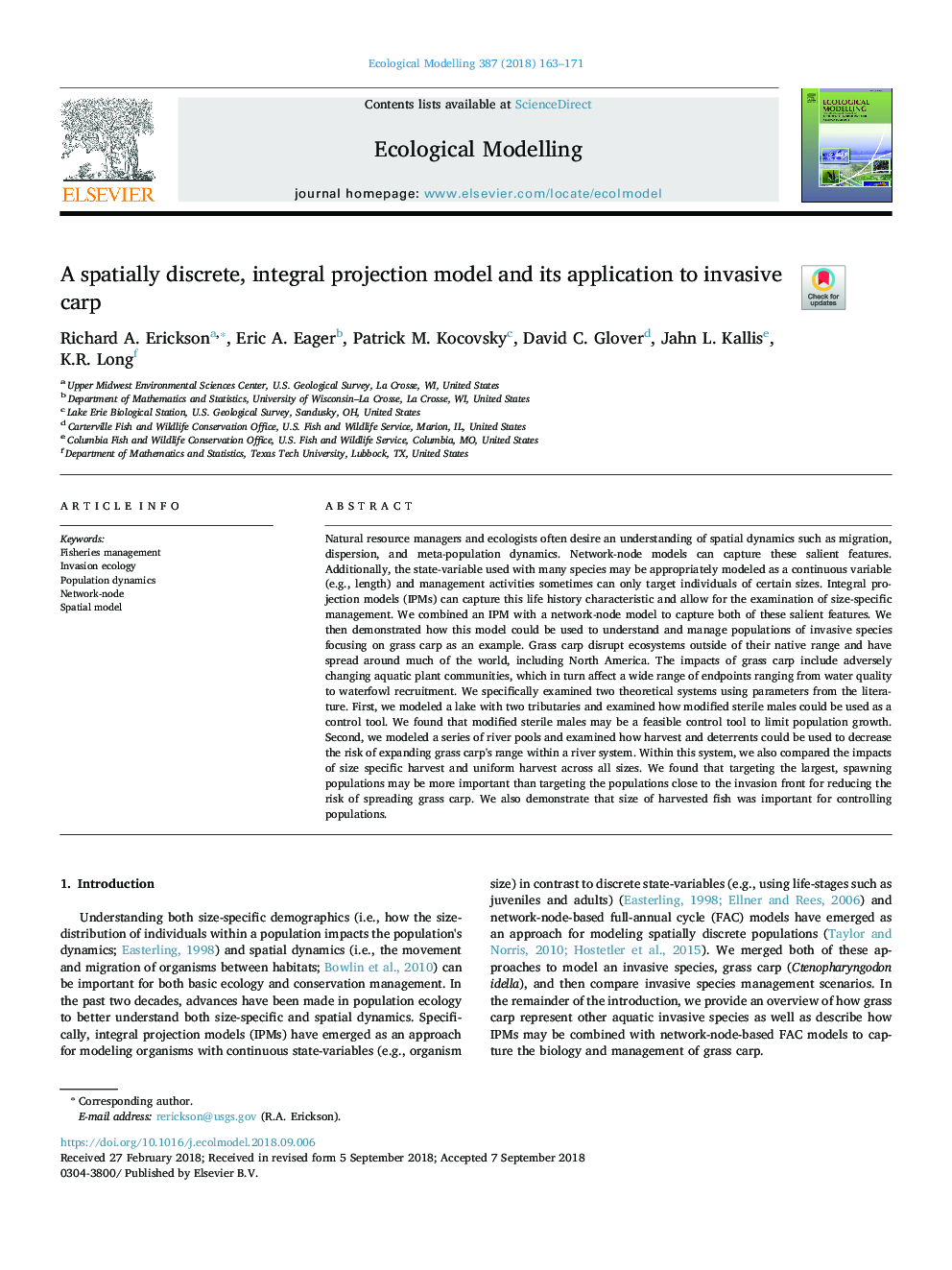| کد مقاله | کد نشریه | سال انتشار | مقاله انگلیسی | نسخه تمام متن |
|---|---|---|---|---|
| 11028710 | 1646748 | 2018 | 9 صفحه PDF | دانلود رایگان |
عنوان انگلیسی مقاله ISI
A spatially discrete, integral projection model and its application to invasive carp
ترجمه فارسی عنوان
مدل طرح ریزی فضایی گسسته، یکپارچه و کاربرد آن در کپور مهاجم
دانلود مقاله + سفارش ترجمه
دانلود مقاله ISI انگلیسی
رایگان برای ایرانیان
کلمات کلیدی
مدیریت شیلات، بوم شناسی تهاجمی، دینامیک جمعیت، گره شبکه مدل فضایی،
موضوعات مرتبط
علوم زیستی و بیوفناوری
علوم کشاورزی و بیولوژیک
بوم شناسی، تکامل، رفتار و سامانه شناسی
چکیده انگلیسی
Natural resource managers and ecologists often desire an understanding of spatial dynamics such as migration, dispersion, and meta-population dynamics. Network-node models can capture these salient features. Additionally, the state-variable used with many species may be appropriately modeled as a continuous variable (e.g., length) and management activities sometimes can only target individuals of certain sizes. Integral projection models (IPMs) can capture this life history characteristic and allow for the examination of size-specific management. We combined an IPM with a network-node model to capture both of these salient features. We then demonstrated how this model could be used to understand and manage populations of invasive species focusing on grass carp as an example. Grass carp disrupt ecosystems outside of their native range and have spread around much of the world, including North America. The impacts of grass carp include adversely changing aquatic plant communities, which in turn affect a wide range of endpoints ranging from water quality to waterfowl recruitment. We specifically examined two theoretical systems using parameters from the literature. First, we modeled a lake with two tributaries and examined how modified sterile males could be used as a control tool. We found that modified sterile males may be a feasible control tool to limit population growth. Second, we modeled a series of river pools and examined how harvest and deterrents could be used to decrease the risk of expanding grass carp's range within a river system. Within this system, we also compared the impacts of size specific harvest and uniform harvest across all sizes. We found that targeting the largest, spawning populations may be more important than targeting the populations close to the invasion front for reducing the risk of spreading grass carp. We also demonstrate that size of harvested fish was important for controlling populations.
ناشر
Database: Elsevier - ScienceDirect (ساینس دایرکت)
Journal: Ecological Modelling - Volume 387, 10 November 2018, Pages 163-171
Journal: Ecological Modelling - Volume 387, 10 November 2018, Pages 163-171
نویسندگان
Richard A. Erickson, Eric A. Eager, Patrick M. Kocovsky, David C. Glover, Jahn L. Kallis, K.R. Long,
